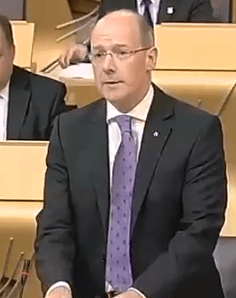On Wednesday, Cabinet Secretary for Finance John Swinney presented the Scottish Government’s draft budget for 2014-15, also accompanied by “indicative spending plans” for 2015-16. He said that the £30bn annual budget would be used to: “support an investment led recovery, create jobs, boost housing [and] continue progress towards a low carbon economy.”
Much of the media coverage around the budget highlighted the commitments to invest a total of £8bn over the two years in infrastructure, to meet a five year target of 30,000 new affordable homes, and to provide a £68m fund over the two years to address the impact of welfare reform changes.
SURF has been looking closely at the regeneration impacts of the draft budget. Some of the most notable announcements in this regard are:
- The annual “housing and regeneration” budget will rise from £364m (2013/14) to £532m (2014/15) and again to £619m (2015/16) – a 70% increase overall (p127).
- This increase is largely accounted for by the increased investment in housing supply and a £120m fund to support first time buyers and existing owners to buy a new-build home (p5).
- The key priorities for the £8bn in infrastructure investment for 2014/15 & 2015/16 include transport projects, new schools, next generation broadband and renewable energy (p5-7).
- An action plan for town centres, based on the work of the 2012-13 National Town Centres Review External Advisory Group that SURF participated in, will be published in Autumn 2013 (p123).
- The People and Communities Fund, which supports community led regeneration, will distribute a total of £24m for the three years to March 2016 (p6).
- The £50m Scottish Partnership for Regeneration in Urban Centres (SPRUCE) fund will, “continue to be targeted at disadvantaged areas” (p125).
- The Regeneration Capital Investment Fund, which comprises SPRUCE, the £25m 2014/15 Regeneration Capital Grant Fund and the Vacant and Derelict Land Fund, comprises £150m over the same three year period (p6).
- There is recognition of the significant contribution cultural activities have on social regeneration (p107-111).
- Recognising the agency’s role in promoting community regeneration, Historic Scotland will receive a 7% budget increase (£70m in 2013/14 to £75m 2015/16) (p115).
- More Tax Increment Financing (TIF) pilots will be used to, “lever in additional investment for regeneration” (p145).
For further information on any of these elements, please see the listed page numbers that refer to the PDF version of the budget paper. In the coming weeks SURF will be discussing the potential impact of these changes with our member organisations.

